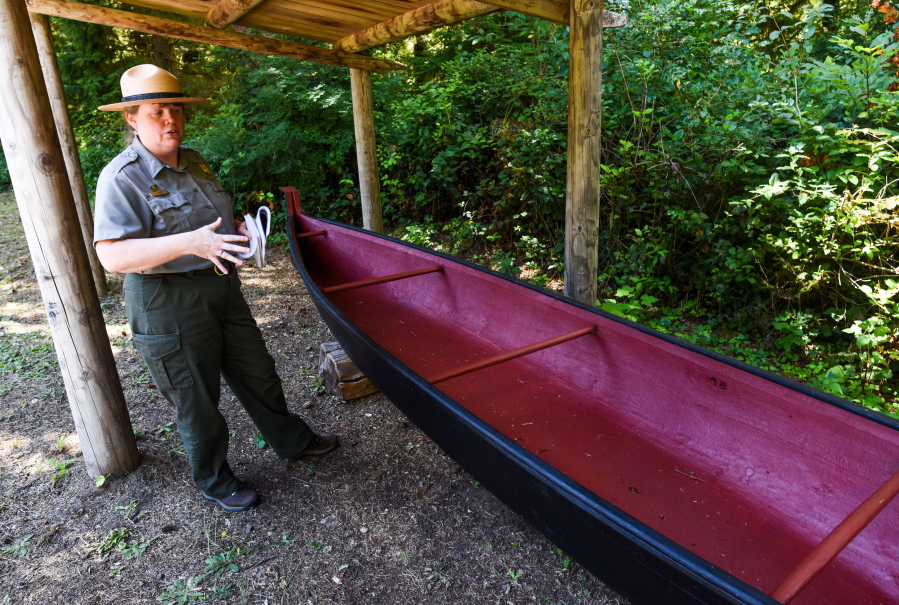ASTORIA, Ore. — Outside the visitor’s center at Lewis and Clark National Historical Park, a historically accurate Chinook canoe is back on display after being fully repaired last year.
The Okulam canoe shows park visitors the most popular type of canoe used by the Chinook tribe for more than two centuries, The Daily Astorian reported. The style is known as a “high prow,” and is designed for the ocean and high waves. “This canoe was really made to resemble a canoe at the time of Lewis and Clark,” Tony Johnson, chairman of the Chinook Indian Nation, said during a talk in Astoria last winter.
Johnson, a master canoe carver, restored Okulam from January 2015 to May, when it returned to the park in time for this summer. Since it was built 15 years ago, cracks in Okulam started to expand and the canoe began to unravel. Part of the reason Okulam fell into disrepair is because it dried out on land, rather than being used regularly in the water.
Johnson began constructing the canoe in 2001, and worked on it at the park for visitors to watch and learn. Okulam originally went on display in 2003, after a naming ceremony.
Okulam means “Sound of the Ocean,” or “Spit Belly,” the name of a gluttonous creature in Chinook culture.
The canoe was carved from a Western red cedar log. It was carved upside down, and steamed until it split apart.
“You are literally steaming it and it releases and opens up,” Jill Harding, who is in charge of visitor services at Lewis and Clark National Historical Park, said. “That gives it the shape.”
High prow canoes — painted in traditional red and black colors — are considered the most common used by the Chinook people. They move swiftly through the water and are extremely maneuverable.
“They are incredible, especially compared to Lewis and Clark canoes,” Harding said.
Lewis and Clark’s canoes were bulky, tipped easily and were hard to turn. According to historians, Lewis and Clark were impressed with the high prow canoes and eagerly attempted to trade for them. Meriwether Lewis traded one of his military coats and tobacco for a high prow canoe.
At one point during their stay on the North Coast, Corps of Discovery members stole a high prow canoe from the Chinook tribe. The members were caught when they paddled the stolen canoe in the same inlet as a Chinook tribe member, who recognized his canoe.
Lewis and Clark gave away three elk hides to keep the canoe.
The Chinook Indian Nation uses their canoes in family gatherings, ceremonies and annual tribal journeys. Johnson is reviving the Chinook canoe culture by building and restoring canoes like Okulam.
“With canoes, they are part of the living culture,” Harding said. “They are part of the family.”



